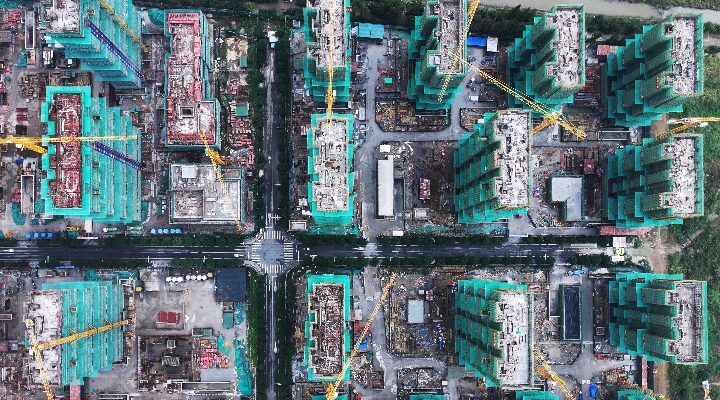“Living in a world strewn with the wreckage of the Soviet empire it is hard for most people to realize that there was a time when the Soviet economy, far from being a byword for the failure of socialism, was one of the wonders of the world – that when Khrushchev pounded his shoe on the U.N. podium and declared, “We will bury you”, it was an economic rather than a military boast”.
Paul Krugman, 1994
When in 1959, Nikita Khrushchev visited the Unites States, the spectacular economic growth recorded by the Soviet Union was commonly regarded as a challenge to the supremacy of the western model of democratic capitalism.
Impressive statistics, such as its manufacturing output of tractors, mesmerised western opinion formers. Newsweek warned that the Soviet Union might well be “on the highroad to economic domination of the world”. Krugman’s economic analysis suggested that this “economic miracle” could be explained simply by the “rapid growth in inputs: expansion of employment, increases in education levels, and, above all, massive investment in physical capital”, and that the subsequent collapse of the Soviet economic model stemmed from its failure to increase “units of output per units of input”. With falling productivity, Soviet growth would inevitably slow as returns on investment diminished.
Are there Parallels with the Chinese Economy Today?
The Chinese economic model has been to establish itself as the world’s lowest cost manufacturer by utilising cheap rural migrant labour on an unprecedented scale, and then to recycle the current account surplus from these exports on an equally unprecedented capital spending boom.
Accordingly, as the supply of cheap rural migrant labour slows and capital build in manufacturing, housing and infrastructure outstrips sustainable utilisation then – without commensurate gains in productivity - growth will slow-down. Given the economic model requires surplus savings to be ploughed back into new production, consumption remains relatively depressed. As with the post-1950s Soviet Union, there is a tipping point when the economic model stops working.
China’s response to the global financial crisis in 2009 – a stimulus programme, equivalent to 16% GDP – is now widely regarded as a policy error. Local governments were provided with bank loans to finance capital spending on infrastructure, housing and manufacturing in order to achieve mandated GDP targets.
Money supply (M2) doubled between 2007 and 2011, with over half of all bank lending directed toward infrastructure projects. Much of the capital formation was non-productive and wasteful. The stimulus also resulted in local party officials enriching themselves through appropriation of revenues from land sales, kick-backs and often ownership of the construction companies involved. This resulted in a conspicuous consumption boom amongst Chinese elites and more recently a subsequent backlash in the form of an “anti-corruption” purge.
Chinese Banking Industry has Been Weakened
No major economy can sustain annualised loan growth of 30% without a subsequent rapid deterioration in asset quality. There is a general reluctance across the industry to recognise bad loans: liquidity to unprofitable or insolvent borrowers is simply rolled and, as such, the “true” non-performing loan (NPL) ratio is likely double digit, compared to an incredulous official rate of just 2%. At best, the Chinese banking system will find itself short of equity and unable to allocate capital to profitable ventures that support sustainable economic growth. At worst, lack of confidence in a rotten and corrupt banking system will result in a wholesale loss of confidence in Chinese assets.
The trade-off between the short-term pain of reducing excess capacity in a wide-range of economic activities and the long-term gain of more efficient mobilisation of resources is now widely recognised. Nevertheless, it is difficult to see how capacity is shut down, as financing to “zombie” corporates is often supplied by regional banks under the influence of local government, reluctant to create localised unemployment and unrest.
A symptom of this structural over-capacity is that factory gate prices (PPI) are currently falling at an annualised double digit rate. Only by adjusting nominal output by this massive GDP deflator can it be argued that Chinese manufacturing is still contributing to overall economic growth.
There is the potential for this excess manufacturing capacity to be at least partially absorbed by exports. But China is no longer the world’s lowest cost manufacturer, not only because the supply of additional cheap labour has diminished, but because its currency, by virtue of being pegged to the US dollar, has risen significantly against its Asian peers – on a trade weighted basis 30% over five years.
The Beijing government sees a strong and stable exchange rate as politically desirable: in part given their desire for its prestige as an international hard currency; but also because of a lack of confidence in its economic prospects that a devaluation would betray.
The Chinese economic model is now in crisis. As such, the question we should be asking is whether China, like the Soviet Union in 1959, has already peaked?
Morningstar's "Perspectives" series features investment insights from third-party contributors. Here, Bronze-rated fund manager Barry Norris of Argonaut Capital shares the view that China may already past its best.





























